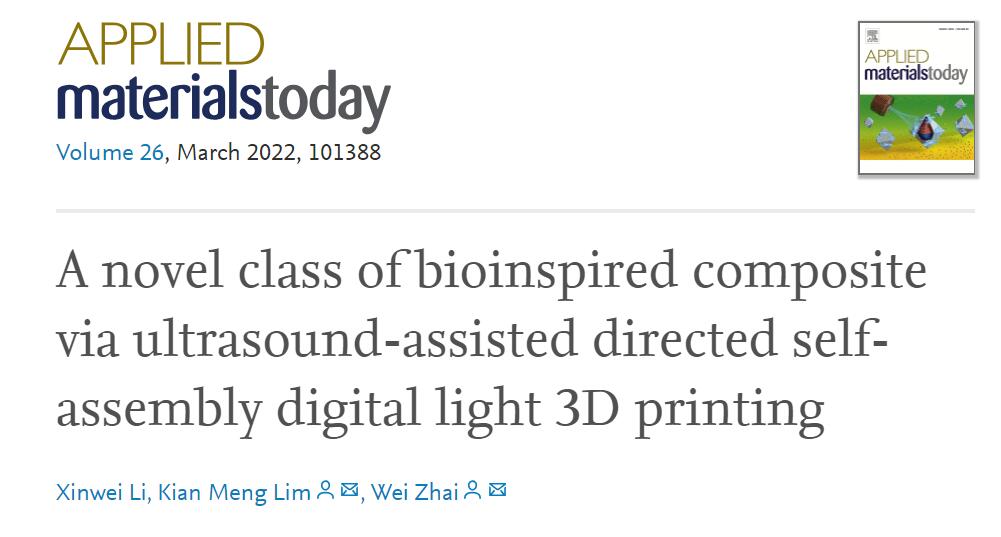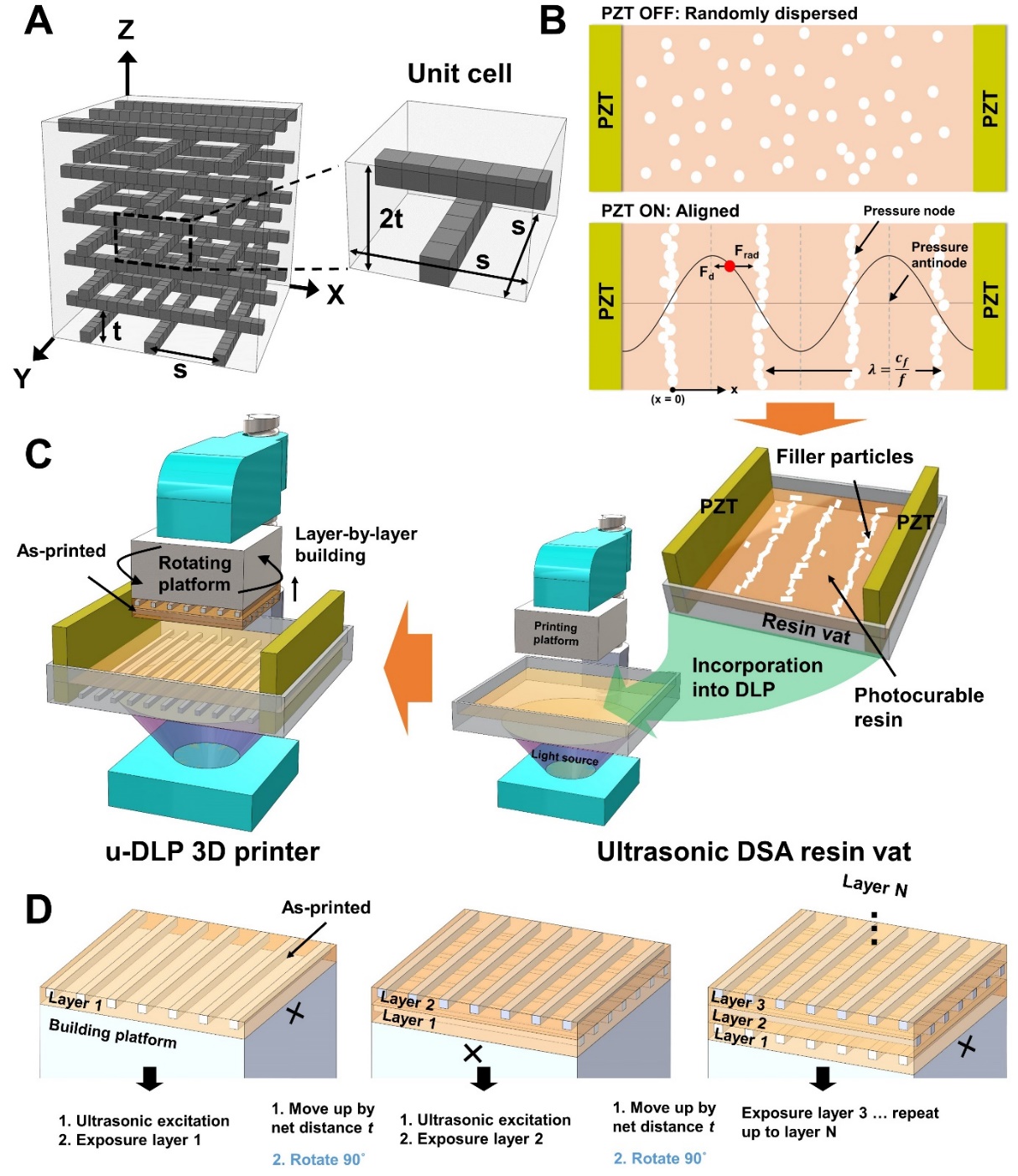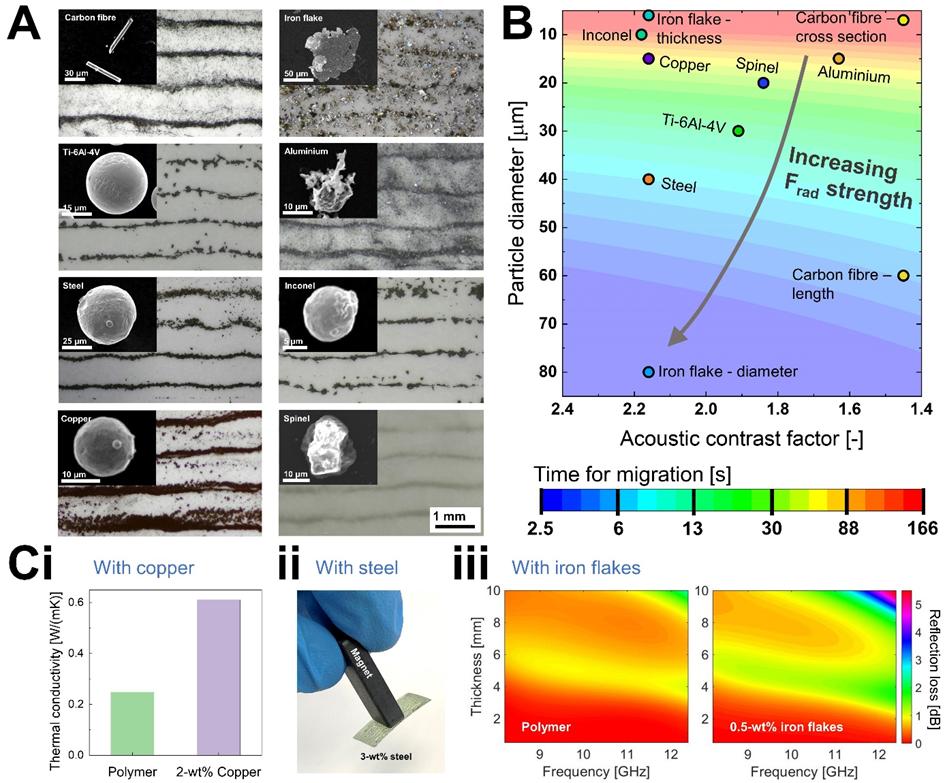The research group of Zhai Wei and Lim Kian Meng of the National University of Singapore submitted a manuscript to Antarctic bears: DLP assisted by a novel ultrasound field 3D printingDesign and preparation of superabsorbent discontinuous interpenetrating phase composites.

Influenced by wood, trabecular bone, butterfly wings and ocean
biology
Inspired by natural pore structures such as frameworks, solid structures with high porosity (usually greater than 70%) have been designed and called porous structures. The porous structure has the characteristics of light weight and high strength, and can maintain a high plateau stress during the failure process, and has excellent energy absorption characteristics. However, due to the highly open pores inside, the structures lack mutual protection from failure. In order to make full use of the deformation mode of the stress plateau region of the porous structure, the porous structure can be used as the reinforcing phase in the composite material to prepare an interpenetrating-phase composite (IPC). However, when designing IPC materials, if the resin and resin composite form is used, the material strength will be poor, and the use of resin and metal/
ceramics
The composite form in turn increases the density of the material. Therefore, it is difficult for the above two design methods to obtain ideal lightweight materials.
To obtain high-performance composites, not only innovations in material design are required, but also improvements in fabrication methods.Physics-Assisted Oriented Self-Assembly Resin3D printingTechnology is the leading edge manufacturing technology for a new generation of composites, enabling precise control over the microstructures filled in composites. Currently, the directional self-assembly of fillers can be achieved by means of electric, magnetic, shear, and ultrasonic fields. Among them, the ultrasonic field uses standing waves to promote the movement of the filler, which is suitable for most filler materials.
Recently, ultrasonic field-assisted3D printing technology, the researchers proposed a discontinuous interpenetrating phase composite material, “discontinuous” IPC, abbreviated as d-IPC material. Unlike traditional IPC, the mid-strength component of d-IPC is composed of discontinuous particles. To prepare d-IPC materials, the researchers first investigated the DLP
3D printerA modification was made to add an ultrasound field-assisted directed self-assembly device (Figure 1).

△Fig. 1: A schematic of the ultrasonic-DLP printing process and deriving the d-IPC.
The researchers then printed (Figure 2A) and experimentally tested the d-IPC material.The experimental results show that with pure
Resin material
In contrast, the d-IPC material containing 1 wt% ceramic particles was optimized to improve the specific energy absorption by 37 J/g. In addition, although the ceramic particles inside the d-IPC material are not connected to each other, the material strength is as high as 68 MPa thanks to the macroscopically ordered assembly method. Compared with the composite materials with the same content of ceramic particles but randomly arranged particles and the lightweight and high-strength lattice structure, the d-IPC material has obvious advantages (Fig. 2B).

△Fig. 2: Illustration of the (A) as-printed d-IPC samples and (B) benchmarking materials used for comparisons.
By studying the reinforcement mechanism of d-IPC materials, it is found that the reinforcement mainly comes from the orderly assembled but discontinuous ceramic particle reinforcement phase, which does not lead to a significant reduction in material strength, but can induce local asymptotic failure. Control the large deformation of the material. Ultrasound field assists DLP due to the openness of the printed material
3D printing technologyIt can be extended to the preparation of materials containing fillers of different materials, sizes and morphologies combined with resin matrix (Figure 3A, B), and further develop the multifunctional application potential of d-IPC materials (Figure 3C).

△Fig. 3: (A,B) Extended studies for a diverse range of particles and demonstrations of (C) multifunctionalities for enhanced thermal conductivity, magnetism, and microwave absorption.
In conclusion, this study demonstrates the potential of using ultrasonic field-assisted DLP 3D printing to develop novel composite materials with excellent energy absorption properties and unique deformation modes. This study also provides new ideas for the design of future composite energy absorbers. Relevant research results were published in Applied Materials Today. Dr. Li Xinwei is the first author of the paper, and Associate Professor Lim Kian Meng and Assistant Professor Zhai Wei are the corresponding authors of the paper.
https://doi.org/10.1016/j.apmt.2022.101388
(responsible editor: admin)


0 Comments for “National University of Singapore: Novel ultrasonic field-assisted DLP 3D printing design and fabrication of super-absorbing discontinuous interpenetrating phase composites”